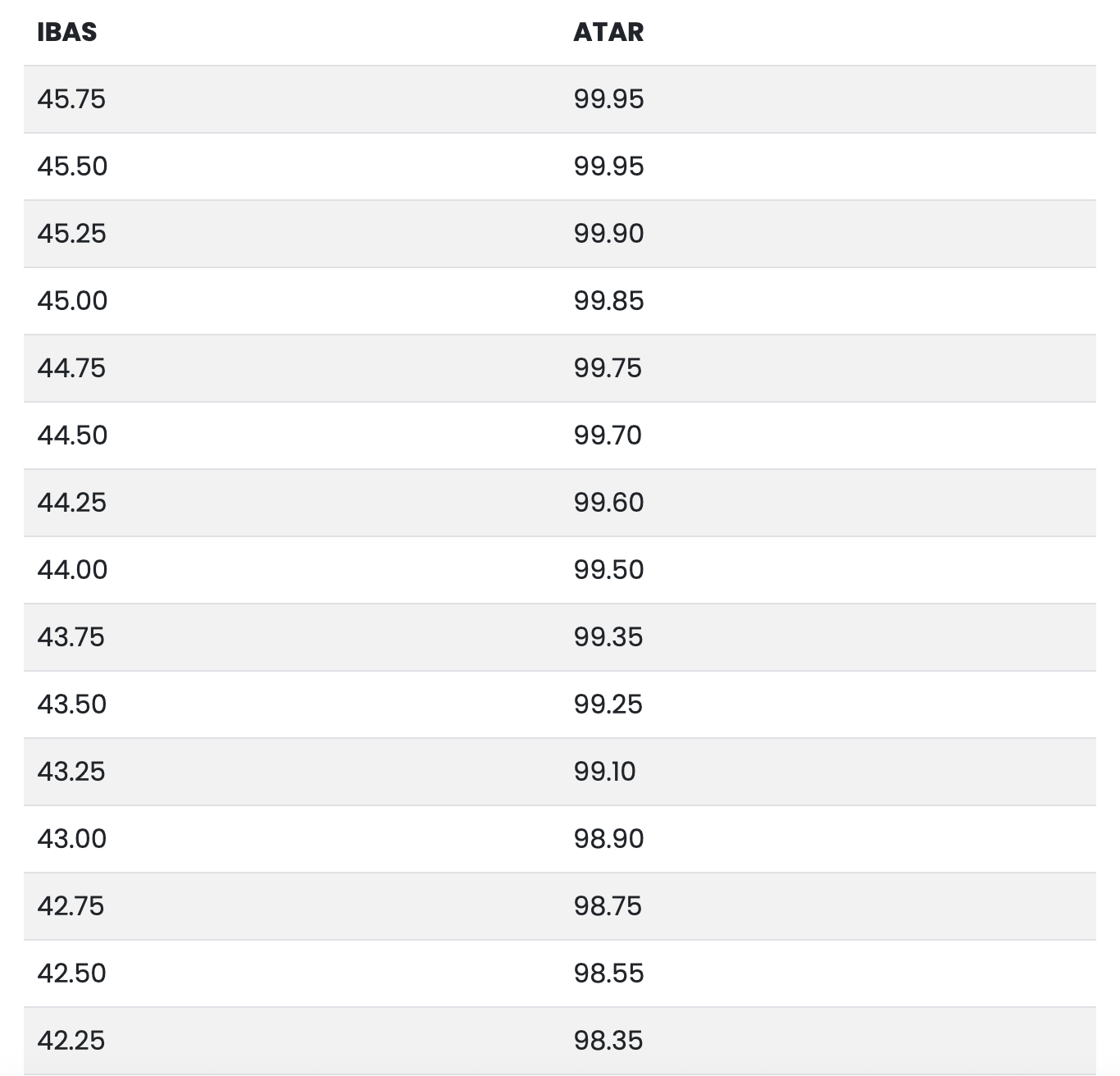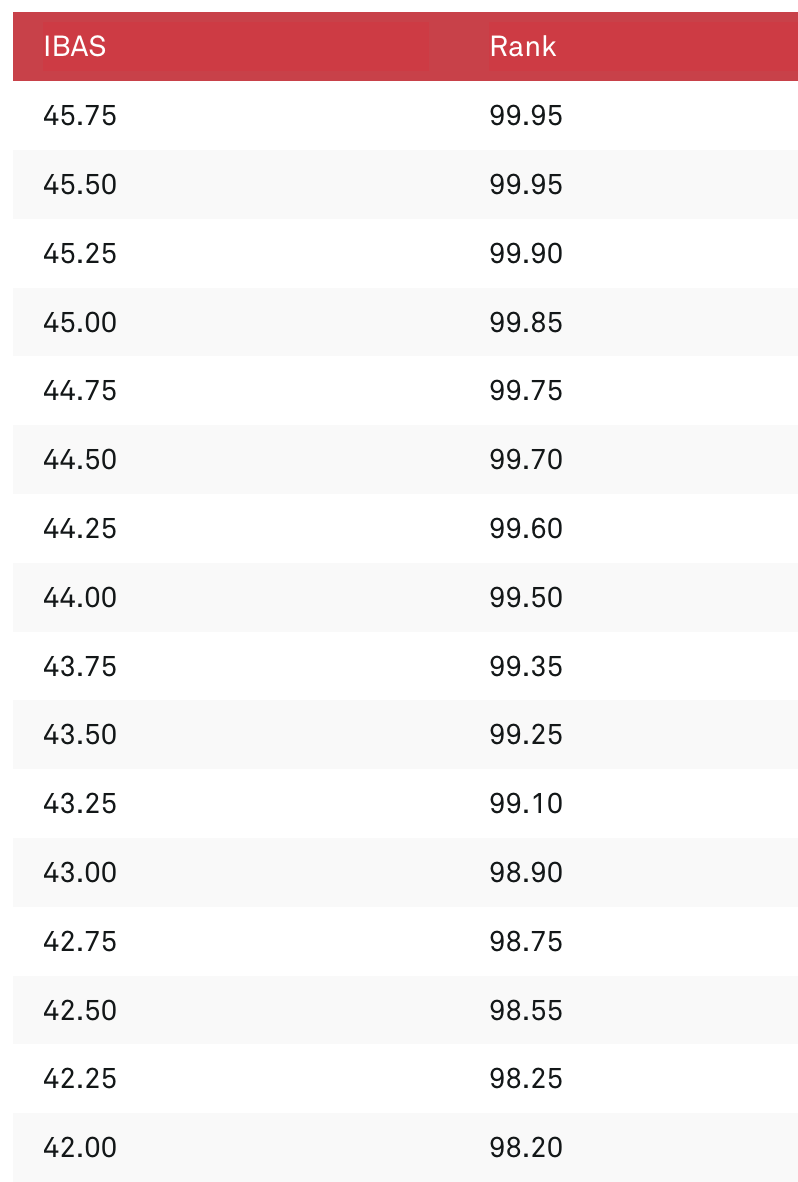KIS Summary:
- IB scores are out of 45, while ATAR is a ranking. IB Students will get a notional ATAR when applying for Australian Universities.
- ACTAC changes the conversion every year based on data from the previous year.
- Conversion tables provided for 2025/2026.
⭐️ Why Parents & Students Love KIS Tutoring
With different curriculums that assess and score their students in completely different ways, how are Australian IB students compared against ATAR students for university entry?
If you completed secondary education under a state-imposed curriculum, such as NSW's HSC or Victoria's VCE, you will receive an Australian Tertiary Admission Rank (ATAR).
Since all Australian universities use the ATAR, along with any other applicable adjustment factors, to help them decide which students to admit into their institution, how can IB students apply to Australian universities?
Table of Content:
- How is the IB Scored?
- How do Universities compare IB and ATAR then?
- How are IB Scores Converted to ATAR?
- How are IB Scores converted to ATAR for 2026 admission?
- FAQs
How is the IB scored?
Unlike the ATAR, which ranks its student participants and gives them a percentile, the IB allocates points out of 45.
IB students are awarded grades from 1 to 7 for each of their six subjects (for a total of 42) and up to an additional 3 points for the three core components (TOK, EE, CAS).
Theoretically, all IB students could achieve a perfect score of 45 if they all performed extremely well, because it is a score. In the past, 4 to 7% of IB students each year achieved a perfect IB score of 45.
On the other hand, to achieve a perfect ATAR score of 99.95, you have to be in the top 0.05% of students. So it would be impossible for everyone to achieve a perfect ATAR.

How do Universities compare IB and ATAR then?
If you completed a state-imposed curriculum and received an ATAR the traditional way, you would apply to university through your state's university admission portal. For UNSW it is UAC (Universities Admissions Centre) and for Victoria, it is VTAC (Victorian Tertiary Admissions Centre). They do the job of allocating students based on ATAR and adjustment factors into their desired course and university.
If you completed the IB and wish to attend an Australian university, you would apply for courses through UAC or VTAC with a notional ATAR based on your IB admissions score. That is, your IB score will be converted into a corresponding ATAR that allows you to apply to university just as if you had done an ATAR curriculum.
This conversion is calculated by The Australasian Conference of Tertiary Admissions Centre (ACTAC).
How are IB Scores Converted to ATAR?
There has been some controversy concerning the IB to ATAR conversions.
- In particular, many ATAR students felt the conversions unfair since it gave all IB students with a 45 a 99.95 ATAR despite about 5% of IB students receiving a 45, and only 0.05% of ATAR students receive a 99.95.
- Furthermore, the conversions were very clear-cut and gave no consideration to the performance of the IB students in their respective subjects. This resulted in ACTAC enforcing a slight change in conversion methods in 2022 which differentiated IB students on the same IB score. That is, not all IB 45s would convert to a 99.95.
Amended IB Diploma score to Combined Rank conversion table
| IB Diploma score | Example of current Combined Rank (all applicants with the same IB score achieve the same Combined Rank) | Example of new Combined Rank (2022) (applicants with the same IB score achieve a more precise Combined Rank based on their subject results) |
|---|---|---|
38 | 96.25 | 96.45 |
38 | 96.25 | 96.25 |
| 38 (below average in each subject band) | 96.25 | 96.00 |
38 | 96.25 | 95.75 |
37 | 95.20 | 95.45 |
37 | 95.20 | 95.20 |
| 37 (below average in each subject band) | 95.20 | 94.90 |
37 | 95.20 | 94.55 |
How are IB Scores converted to ATAR for 2026 admission?
VTAC
This is the conversion table the VTAC will be using:

Find out more here.
QTAC
This is the conversion table the QTAC will be using:

Find out more here.
Conclusion
Since the conversions change every year based on the data of the previous year, we cannot provide you a generic conversion. Make sure you search up the official conversion table the year that you will be applying for an Australian University. To save you the headache of meeting the cut-off though, a private tutor from KIS Academics can help you get the grades you need!
For more study resources, check out these KIS Academics articles:



FAQs
Is IB or ATAR better?
There is no good way to compare these two curriculums; they both have their strengths and weaknesses. We dive into it more in this article.
What is the IB?
International Baccalaureate is a curriculum created in Geneva, Switzerland. It was designed to provide a universal, standardised and, more importantly, transferable diploma for students who wish to move abroad. Find out more in this article.
Is the IB or the ATAR harder?
Again, there is no good way to compare it, thought we will have to say that it is hard no matter what you do. This is the big certificate that helps you get into University, so there is some pressure attached to the certificate, no matter what certificate it is you're doing.
There are other factors to consider when deciding whether or not to do the IB, so please check out this article.
How do I choose between the IB and the ATAR?
Talk to people! Find students who've done both curriculums, teachers, your parents, and check out this article. Consider all the factors mentioned in that article and weight out your options.
Want more personalized study guidance to help drastically improve your marks? A private tutor from KIS Academics can make the biggest difference!







